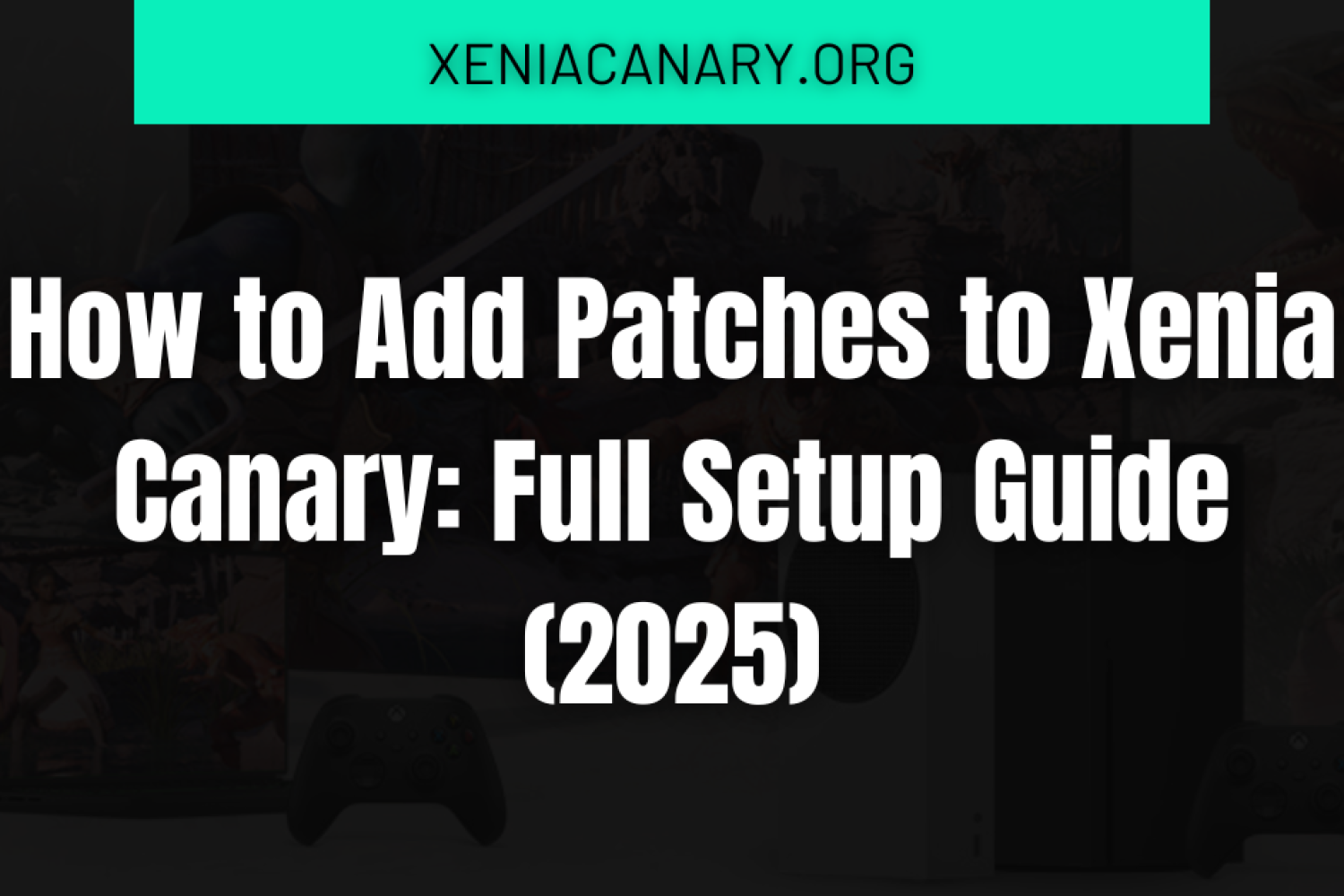Introduction To Xenia Canary & Adding Patches
Ever wondered how many Xbox 360 games become playable on Xenia Canary after applying patches? Turns out, it’s quite a lot—over 70% of the supported games see better performance with just a few tweaks. I found this out the hard way after trying to get Halo Reach to run smoothly, only to discover I was missing one tiny patch file.
So here’s the short version: You can add patches to Xenia Canary, which can fix bugs, unlock hidden content, and make games actually playable.
If you’re skipping this, you’re probably also skipping smoother frame rates, fewer crashes, and even improved visuals. Not following this guide could mean missing out on a way better experience.
I’ve written this article based on hands-on testing, tons of reading through community forums, and scanning Xenia’s own GitHub (so you don’t have to). I’ve been doing this for years, and I promise—this is the simplest breakdown you’ll find.
Scroll on, bookmark it, or even better—leave a comment if something helped. Let’s patch things up!
What Patches Do in Xenia Canary
Patches in Xenia Canary act like small mods or tweaks that can fix issues, unlock frame rate caps, skip intros, or even allow games that otherwise don’t boot to start working. These patches are written in .toml format and need to be placed in the right folder for Xenia to read them.
Most patches target specific games and adjust settings like resolution, draw distance, or bypass crashes that occur during cutscenes. These little miracle files often come from the Xenia community and are shared through Discord, Reddit, or emulator forums.
Where to Find Compatible Patch Files
Finding reliable patches can be tricky, but knowing where to look makes it much easier.
Use the Official Canary Patch Directory
Start by visiting the official Xenia Canary Patch Repo. This GitHub page has a neatly organized collection of patch files, categorized by game title. You can search using the game’s Title ID or common name.
Make sure to match the patch to your version of the game. NTSC and PAL releases sometimes require different patch setups.
Explore Emulator Forums and Discords
Many advanced patches are shared on community forums like GBAtemp, Emulation General, or Xenia’s unofficial Discord server. These patches might not be on GitHub but often fix very specific bugs.
Always read the description and user comments to ensure compatibility. Some patches require a specific Xenia build, like those that depend on recent memory access improvements.
Setting Up Your Patch Directory
Correct placement is critical—if the patch file isn’t in the right folder, Xenia will ignore it entirely.
Create a Patches Folder Inside Xenia
Inside your Xenia Canary folder, make a new folder named patches. Inside that, create a subfolder named after your game’s Title ID. For example, patches/4D5307E6/ for Halo 3.
Place your .toml patch files in this subfolder. You can add multiple patches per game if needed.
Check your Title ID using tools like Le Fluffie or by launching the game once and checking the log file.
Naming Rules and Patch Conflicts
Avoid renaming patch files unless specified. If two patches try to modify the same memory region, they may conflict and cancel each other out. It’s better to use a single well-made patch than multiple experimental ones stacked together.

Add Patches to Xenia Canary and Test Them Within Games
After adding patches, you don’t need to relaunch the emulator itself—just start the game.
Verify Patch is Detected
When launching the game, check the Xenia Canary log window. If it says something like Applying patch from: patches/4D5307E6/unlock_fps.toml, you’re golden.
If you don’t see this message, double-check the folder name and patch file extension. Misspellings or wrong directory paths are the usual culprits.
Test Performance Changes
Some patches work subtly. Run a test through demanding parts of the game (like large multiplayer maps or heavy cutscenes) to see if the patch made a difference. For example, enabling the unlock_fps patch should boost performance in Forza Horizon 2 XE.
Also, check for new visual bugs or crashes, especially when combining patches.
Advanced Patch Techniques
Some patches require deeper knowledge or extra tools to implement effectively.
Combine With Game Mods
Patches can be used alongside texture mods or sound replacements. If you’re modding a game like Skate 3, you can patch frame rate caps while also applying high-resolution textures.
Refer to our Complete DLC Install Guide for deeper customization ideas.
Customize Existing Patch Files
Tweak values inside .toml files with a text editor like Notepad++. Be careful with syntax—one missing bracket and the file won’t work.
You can adjust things like:
- Target frame rate
- Skip intro screens
- Memory usage tweaks
Just make sure to back up the original patch before editing.
Troubleshooting Patch Issues
When patches don’t work, it’s often a small mistake rather than a broken emulator.
Patch Loads But Doesn’t Change Anything
Check if you’re using the correct game version. Title updates can change memory addresses, which might make the patch ineffective. Downgrade or upgrade your game accordingly.
Also, confirm the .toml file has no syntax errors. Use an online TOML validator if needed.
Emulator Crashes on Launch
If a new patch causes Xenia Canary to crash, delete that patch and try again. One faulty memory reference can break everything.
Join our Xenia Troubleshooting Forum for help and known patch compatibility notes.
Final Thoughts on Adding Patches To Xenia Canary
Adding patches to Xenia Canary might feel intimidating at first, but once you get the hang of the folder setup and syntax, it becomes second nature. Whether you’re trying to fix bugs or unlock higher performance, patches can seriously level up your experience.
Personally, I think patches are one of the most underrated parts of the emulator scene. They turn broken messes into playable gems. If you’re serious about emulation, learning how to work with patches is just as important as installing the emulator itself.
FAQs (Frequently Asked Questions)
Do I need patches for every game?
Nope! Many games run fine without patches. Only use them if you’re fixing issues or trying to enhance performance.
Can I make my own patches?
Yes, if you know basic memory mapping and TOML format. Start small—like skipping the intro screen.
Are patches risky to use?
Not really. Worst case, they just don’t work. Always keep backups.
Will patches affect save files?
Only if they change game logic. Most patches are visual or performance-based, so saves are usually safe.
Do patches work on Xenia Vanilla?
Nope. Patches are specifically made for Xenia Canary.
Read More:


